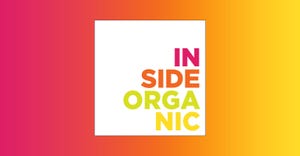New Markets for Eye Health Nutraceuticals
The majority of the visually impaired in the world are in the most populous parts of the world, in regions with limited access to quality and modern healthcare. The question that comes to mind is: Can nutraceuticals play a role in reducing cost of health care?
November 21, 2017

According to the World Health Organization (WHO), the number of visually impaired people in the world is 285 million. Thirty-nine million of these were blind and 246 million have poor vision. WHO further estimates that 65 percent of people of the visually impaired and 82 percent of all blind are 50 years and older.
Globally, the principal causes of visual impairment are uncorrected and refractive errors and cataracts. Other causes include glaucoma, age-related macular degeneration (AMD), etc. However only 2 percent people are afflicted by AMD, diabetic retinopathy, trachoma and corneal opacities.
The causes of blindness are cataract (51 percent), glaucoma (8percent), AMD (5 percent), childhood blindness and corneal opacities (4percent), uncorrected refractive errors and trachoma (3percent) and diabetic retinopathy (1percent), according to WHO data. Twenty-one percent of the blindness causes are yet undetermined.
The majority of the visually impaired in the world are in the most populous parts of the world, namely China and India. Many of these regions have limited access to quality and modern healthcare.
The cost of medicine and healthcare is a question that is hotly debated across the globe. In the United States, healthcare is a political hot button. The question that comes to one’s mind is: Can nutraceuticals play a role in reducing cost of health care?
While supplements may not offer a complete solution to visually impaired people of the world, they do offer the prospect of acting as an adjunct to expensive modern medical treatment.
It is widely accepted that fruits, vegetables and fish are rich in carotenoids, vitamins and essential fatty acids. These are claimed to be beneficial to eye health, help fight off age-related degenerative conditions and improve visual acuity. Some of the natural products rich in these nutrients are carrots, spinach, broccoli, citrus fruits, sweet potatoes, fleshy fish like fresh salmon, tuna and others, nuts and dry fruits. This list is by no means exhaustive.
However, food does not contain essential vitamins and minerals in quantities sufficiently large to rapidly bring clinical improvement to the visually impaired. Fortified supplements containing therapeutically effective quantities of vitamins and minerals are therefore recommended by clinicians.
There are seven nutrients/vitamins that are claimed to support eye health: lutein, zeaxanthin, vitamin C, vitamin E, Zinc, vitamin A (beta carotene) and omega -3 fatty acids. Some of these like Lutein and zeaxanthin are said to limit macular degeneration and may reduce incidence of cataracts.
Several studies aimed to improve our understanding on the role of nutrients in eye health have been conducted. The Age-Related Eye Disease Study (AREDS) research group has been at the forefront of conducting trials to study the role of supplements.
A clinical trial with persons older than 55 years of age—an age segment that is vulnerable to developing advanced AMD—was conducted. The trial cohort was administered high dose supplementation with vitamins C and E, beta carotene and zinc. (Arch Othalmol. 2001 Oct;119(10):1417-36)
A second study was performed by the same group (JAMA. 2013;309(19):2005-15) and the results show supplementation with nutrients lutein and zeaxanthin led to a 26 percent decrease in age AMD and a 36 percent reduction in risk for severe cataracts.
In addition to these clinical trials, there is a host of additional scientific literature that supports the hypothesis that nutrient supplements with the minerals and vitamins has a beneficial effect on eye related ailments. Many of these supplements can be obtained from natural products.
Even though there exists a fairly substantial market for eye health based solutions in the mature markets of US and Europe, the bulk of the need resides in price-sensitive, low-cost emerging markets of India and China. Prima facie, U.S. manufacturers with quality eye health nutraceuticals but high cost solutions will find it difficult to compete with local low-cost manufacturing competition in these markets.
But the same logic was put forward before Amazon and Uber entered these markets. They were offered tough competition from the likes of Flipkart, Ola or Didi. Despite all odds, these and many others have not just survived—but also flourished.
There is enough anecdotal evidence to support that U.S. manufacturers, with their innovative solutions, abilities to negotiate joint ventures, acquire local players and, above all, their good manufacturing practices, have succeeded to crack into these markets. There are three potential market segments that industry could use.
In India, there exists a vibrant not-for-profit segment—and this includes international foundations like the Bill Gates Foundation and many others—who are focused on providing health care solutions to vast segments of disadvantaged sections of society in the country and beyond. This segment has the largest number of visually impaired people. Nutritional deficiencies largely lie at the heart of this.
Recently, regulatory changes to the Indian Companies Act has obligated all companies to invest a certain fixed percentage of their revenues on corporate social responsibility projects. Health care and nutrition are popular segments that companies like to target.
The government of India is spending vast sums of money in nutrition of children and women. Low-cost, quality solutions that can improve nutritional profile of segments vulnerable to visual impairment would find takers with government. Recent changes in procurement rules in government has brought in a lot of transparency into this market. Procurement and bidding is now done electronically.
These modes can be leveraged by eye health natural products manufacturers to expand their market footprint. While the familiar market in the United States is always there, it is high time that U.S. industry looks beyond its shores and traditional European markets.
Sudhir Ahluwalia is an author. His latest book is on herbs of the Bible. “Holy Herbs: Modern Connections to Ancient Plants" is available in Paperback and Kindle editions in North America and in book stores in India. He is an ex member of the Indian Forest Service, Tata Consultant and a freelance columnist. He writes on natural products and technology. His web page is www.sudhirahluwalia.com.
About the Author(s)
You May Also Like




.png?width=800&auto=webp&quality=80&disable=upscale)